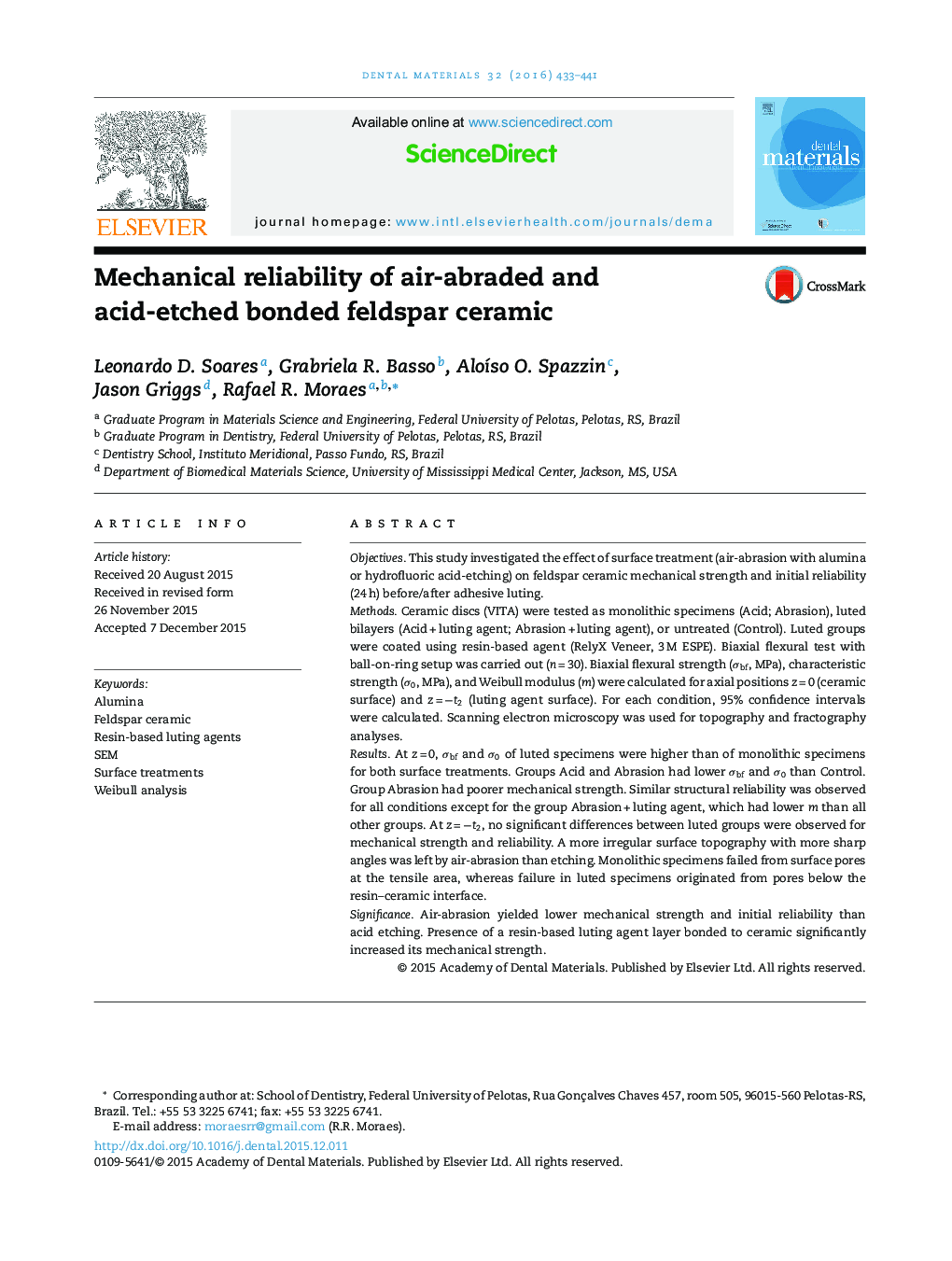| Article ID | Journal | Published Year | Pages | File Type |
|---|---|---|---|---|
| 1420521 | Dental Materials | 2016 | 9 Pages |
•Mechanical performance of air-abraded or acid-etched ceramic was investigated.•Abrasion and acid-etching reduced ceramic mechanical strength and reliability.•Abraded ceramic had the poorest mechanical performance among treatments.•Resin-coating improved the mechanical performance of ceramic.•Failures originated from pores at surface or below the ceramic–resin interface.
ObjectivesThis study investigated the effect of surface treatment (air-abrasion with alumina or hydrofluoric acid-etching) on feldspar ceramic mechanical strength and initial reliability (24 h) before/after adhesive luting.MethodsCeramic discs (VITA) were tested as monolithic specimens (Acid; Abrasion), luted bilayers (Acid + luting agent; Abrasion + luting agent), or untreated (Control). Luted groups were coated using resin-based agent (RelyX Veneer, 3 M ESPE). Biaxial flexural test with ball-on-ring setup was carried out (n = 30). Biaxial flexural strength (σbf, MPa), characteristic strength (σ0, MPa), and Weibull modulus (m) were calculated for axial positions z = 0 (ceramic surface) and z = −t2 (luting agent surface). For each condition, 95% confidence intervals were calculated. Scanning electron microscopy was used for topography and fractography analyses.ResultsAt z = 0, σbf and σ0 of luted specimens were higher than of monolithic specimens for both surface treatments. Groups Acid and Abrasion had lower σbf and σ0 than Control. Group Abrasion had poorer mechanical strength. Similar structural reliability was observed for all conditions except for the group Abrasion + luting agent, which had lower m than all other groups. At z = −t2, no significant differences between luted groups were observed for mechanical strength and reliability. A more irregular surface topography with more sharp angles was left by air-abrasion than etching. Monolithic specimens failed from surface pores at the tensile area, whereas failure in luted specimens originated from pores below the resin–ceramic interface.SignificanceAir-abrasion yielded lower mechanical strength and initial reliability than acid etching. Presence of a resin-based luting agent layer bonded to ceramic significantly increased its mechanical strength.
